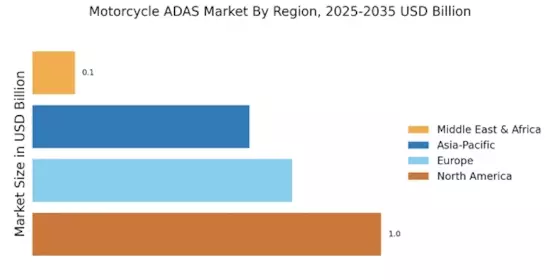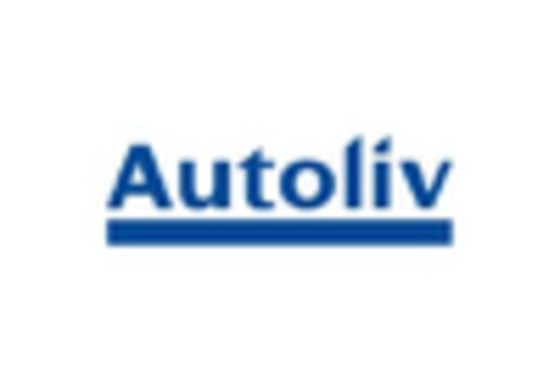The Motorcycle Advanced Driver Assistance Systems (ADAS) market is currently characterized by a dynamic competitive landscape, driven by technological advancements and increasing consumer demand for safety features. Key players such as Bosch (Germany), Continental (Germany), and Denso (Japan) are at the forefront, each adopting distinct strategies to enhance their market positioning. Bosch (Germany) focuses on innovation, particularly in sensor technology and connectivity solutions, which are crucial for the development of autonomous riding capabilities. Meanwhile, Continental (Germany) emphasizes partnerships with motorcycle manufacturers to integrate ADAS features seamlessly into new models, thereby enhancing user experience and safety. Denso (Japan) is also investing heavily in research and development, aiming to leverage artificial intelligence to improve the functionality of its ADAS offerings, which collectively shapes a competitive environment that prioritizes technological advancement and collaboration.
In terms of business tactics, companies are increasingly localizing manufacturing to reduce costs and improve supply chain efficiency. This trend is particularly evident in regions with burgeoning motorcycle markets, such as Southeast Asia. The competitive structure of the Motorcycle ADAS market appears moderately fragmented, with several players vying for market share. However, the influence of major companies like Bosch, Continental, and Denso is substantial, as they set industry standards and drive innovation.
In August 2025, Bosch (Germany) announced the launch of a new suite of motorcycle safety features, including advanced collision avoidance systems. This strategic move is significant as it not only enhances rider safety but also positions Bosch as a leader in the integration of cutting-edge technology into motorcycles. The introduction of these features is likely to attract manufacturers looking to differentiate their products in a competitive market.
In September 2025, Continental (Germany) entered into a strategic partnership with a leading motorcycle manufacturer to co-develop next-generation ADAS technologies. This collaboration is pivotal, as it allows Continental to leverage the manufacturer’s Market Research Future and customer feedback, ensuring that their innovations are aligned with consumer needs. Such partnerships are becoming increasingly vital in a market where consumer expectations for safety and technology are rapidly evolving.
In July 2025, Denso (Japan) unveiled its latest AI-driven motorcycle ADAS system, which utilizes machine learning algorithms to enhance real-time decision-making for riders. This development underscores Denso's commitment to integrating artificial intelligence into its products, potentially setting a new benchmark for safety and performance in the industry. The strategic importance of this innovation lies in its ability to provide riders with a more intuitive and responsive riding experience, thereby enhancing overall safety.
As of October 2025, the Motorcycle ADAS market is witnessing trends that emphasize digitalization, sustainability, and the integration of artificial intelligence. Strategic alliances among key players are shaping the competitive landscape, fostering innovation and enhancing product offerings. Looking ahead, it is anticipated that competitive differentiation will increasingly pivot from price-based strategies to a focus on technological innovation, reliability in supply chains, and the ability to meet evolving consumer demands for safety and connectivity.


















Leave a Comment